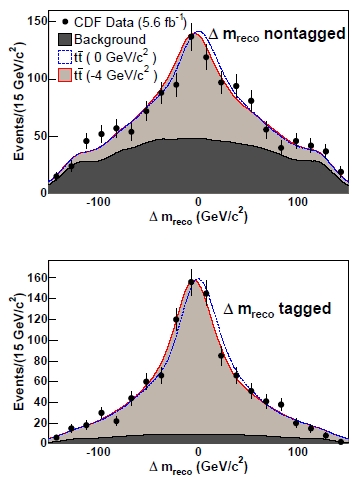"CPT" is an acronym for a symmetry of Nature that is generally believed to be absolutely conserved. Such properties of matter are best tested at a microscopic level, where things behave "simply" -if you understand quantum mechanics. Each of the letters in the acronym refer to a different symmetry operation one may act on elementary particles (as well as more complex systems): C stands for "charge conjugation", and it is the operation consisting in changing the electric charge of every body. P stands for "parity inversion", and it corresponds to a mirror transformation: particles in a mirror will appear to move in the same direction, but their spin will be inverted. T stands for time inversion, and corresponds to inverting the flow of time in particle motion and reactions. If you invert the time coordinate, a forward-moving particle will look like its own anti-matter counterpart moving backward, so if you act on a system with the combination of charge conjugation and time reversal you get back your original system moving backwards, but it will look like its mirror image. Acting on a system with the successive operations of C,P, and T should leave the physics of the system invariant.
So what does this have to do with the top mass ? Well, quite simply, all particles must have the same mass as their antiparticle counterparts if CPT is a conserved symmetry of nature. Since top quarks are created in pairs in proton-antiproton collisions, one can try and measure separately the mass of top and antitop quarks, to verify whether they do look the same.
Of course the same game can be played with any other elementary particle! However, remember that the top quark is the best measured one, due to its large mass. But electrons and muons are certainly much, much better measured. So one must hypothesize that the large mass of the top quark makes it special as far as a potential CPT-violating effect is concerned.

The analysis concentrates on single-lepton final states of top quark pairs from a sample of 5.6 inverse femtobarns of 2-TeV proton-antiproton collisions collected by the CDF experiment in the course of the last 10 years. The charged lepton (an electron or a muon) provides a trigger for the collection of the events, and a first background discrimination. Events are selected to contain in addition a significant amount of missing transverse energy (a signature of the escape of a neutrino from the W boson decay which also produced the charged lepton), and four hadronic jets. The decay chain, in fact, involves the top pair going into two W bosons and two b-quarks; while one W boson decays into the lepton-neutrino pair, the other produces two hadronic jets. The two b-quarks yield the other two jets to complete the "W+ 4 jets " signature. The figure above hopefully clarifies what I mean!
CDF divides their candidates into ones where zero, one, or two jets were "tagged" as containing a signature of b-quark decay. This division produces three orthogonal samples with quite different background content, and improves the overall sensitivity of the analysis.
 Usually, when measuring the top quark mass from top quark pair events candidates, one employs a kinematic fitter that assumes that the top and antitop quarks are equal. A modification of the fit releasing this constraint (but keeping in place others including the equality of W boson masses to the PDG values) allows to extract the top and antitop mass separately.
Usually, when measuring the top quark mass from top quark pair events candidates, one employs a kinematic fitter that assumes that the top and antitop quarks are equal. A modification of the fit releasing this constraint (but keeping in place others including the equality of W boson masses to the PDG values) allows to extract the top and antitop mass separately.The figures on the right show the difference in the best reconstructed mass of top and antitop candidates for non-b-tagged and b-tagged events. The darker shaded curve shows the background component. The red line is a fit which assumes a difference of 4 GeV in the top and antitop masses, while the blue one is the hypothesis of no CPT violation.
A likelihood fit to the data returns a mass difference of top and antitop quarks of -3.3+-1.7 GeV, which is an almost two-sigma difference of the top and antitop masses; the difference is then not significant. also worth noting is its size, which is of 5%, a huge value. If CPT is violated in the mechanism that gives mass to top quarks (whatever this may be), this is a very large effect. According to Guido Altarelli (giving his summary talk at NEUTEL as I write), this mass difference "is unrealistic".
What to say... It would be fantastic to step into such a unexpected effect just by accident. That is: the physicists who have performed this analysis spent a long time making it a precise measurement and deserve our full respect, but the search seems to me a bit like the one of the drunkard who searches his watch under the street lamp, because it is too dark in the place where he believes he really lost it!



Comments